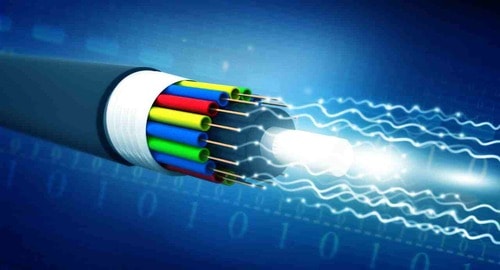
In the modern era of lightning-fast communication and seamless connectivity, the role of fiber optic cables in transmitting data has become paramount. These slender strands of glass or plastic have revolutionized how information is conveyed across vast distances, providing remarkable speed and efficiency. Let’s delve into the fascinating world of fiber optic cables and uncover the intricacies behind their data transmission prowess.
The Marvel of Fiber Optic Technology
Fiber optic cables have emerged as a technological marvel due to their exceptional data transmission capabilities. Through the innovative application of light signals, these cables facilitate the swift movement of data, outpacing traditional copper cables by a significant margin. The secret to their success lies in total internal reflection, where light is continuously bounced within the core of the cable, ensuring minimal signal loss and maximum efficiency.
Light as the Messenger
At the heart of fiber optic data transmission is light itself. The cable’s core, made of highly transparent materials like glass, transmits light signals. The core is surrounded by a cladding layer incorporated with a refractive index that is slightly lower than the core. This critical distinction allows the phenomenon of total internal reflection to occur.
Total Internal Reflection
As light signals enter the core of the fiber optic cable at a specific angle, they strike the core-cladding boundary. Due to the differing refractive indices, the light rays are reflected into the core instead of escaping through the cladding. This process of total internal reflection ensures that the light remains confined within the core, effectively preventing signal dispersion.
Efficiency in Motion
The repeated internal reflections guide the light signals along the length of the cable, essentially bouncing them from one end to the other. This efficient signal propagation method minimizes the need for signal regeneration and amplification, enhancing the overall speed and reducing latency.
Advantages of Fiber Optics Cables For Data Transmission
The utilization of fiber optic cables for data transmission offers a multitude of advantages that have contributed to their widespread adoption:
Blazing Speeds: Fiber optic cables can transmit data at the speed of light, enabling rapid communication and seamless streaming of high-definition content.
Immunity to Interference: Unlike traditional copper cables, fiber optics are immune to electromagnetic interference, ensuring consistent and reliable data transmission.
Long-Distance Connectivity: The minimal signal loss characteristic of fiber optic cables enables data to travel extensive distances without degradation.
Bandwidth Abundance: These cables possess a much higher bandwidth capacity, allowing for the concurrent transmission of large amounts of data.
Secure Communication: Fiber optics are high-speed, as they do not emit detectable electromagnetic signals, making them resistant to eavesdropping.
Innovation Continues to Thrive
As technology advances, the potential applications of fiber optic cables expand further. From revolutionizing telecommunication networks to transforming healthcare through high-resolution medical imaging, fiber optics are at the forefront of innovation. Researchers and engineers are tirelessly working to enhance their efficiency, reduce costs, and explore new avenues for their implementation.
Supporting the Fiber Optic Evolution
As we traverse the digital landscape, the role of fiber optic cables in maintaining our connected world cannot be overstated. Their high-speed, reliable data transmission capacity empowers businesses, individuals, and industries alike. So, the next time you send an email, stream a movie or make a video call, remember the intricate dance of light within the fiber optic cables, seamlessly bringing the world closer together.
The extraordinary efficiency of fiber optic cables in transmitting data is a testament to human ingenuity. Their ability to harness light as a vehicle for communication has not only transformed the way we exchange information but has also opened up a realm of possibilities for the future. As technology hurtles forward, the dazzling potential of fiber optics continues to shine ever brighter.

Leave a Reply